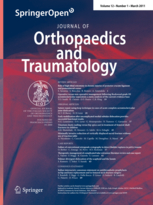
Shoulder & Elbow
External rotation immobilization improves labrum coaptation in glenohumeral dislocation
This report has been verified
by one or more authors of the
original publication.
J Orthop Traumatol. 2015 Dec;16(4):317-21
25 patients with an anterior glenohumeral dislocation were randomly assigned to have their shoulder immobilized in either external or internal rotation. The study was conducted in order to determine whether immobilizing in external rotation was superior to internal rotation in terms of reducing the separation, displacement, and opening angle of the shoulder. The results of this study displayed that although the external rotation group reported lower values for all three outcomes, results were only significant in terms of shoulder separation. The small sample size of this trial and potential additional expenses associated with immobilisation in external rotation highlight the need for further clinical trials..
Unlock the full article
Get unlimited access to OrthoEvidence with a free trial
Start TrialCritical appraisals of the latest, high-impact randomized controlled trials and systematic reviews in orthopaedics
Access to OrthoEvidence podcast content, including collaborations with the Journal of Bone and Joint Surgery, interviews with internationally recognized surgeons, and roundtable discussions on orthopaedic news and topics
Subscription to The Pulse, a twice-weekly evidence-based newsletter designed to help you make better clinical decisions
Exclusive access to original content articles, including in-house systematic reviews, and articles on health research methods and hot orthopaedic topics
Or continue reading this full article
Register Now

Subscribe to "The Pulse"
Evidence-Based Orthopaedics direct to your inbox.





































